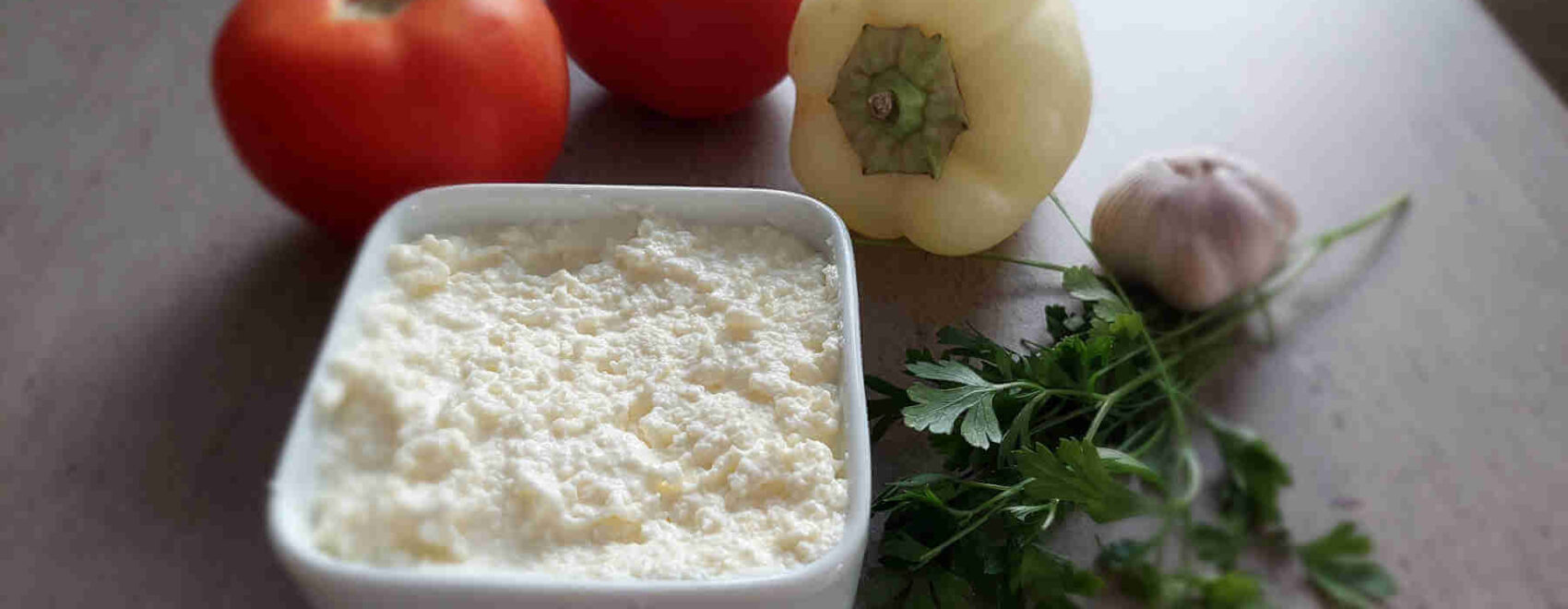Kajmak is a traditional dairy product, cherished in Serbian cuisine and throughout the Balkans. It is a creamy, slightly tangy cheese-like substance made from milk. Known for its rich texture and unique flavor, kajmak is a staple in many households and a popular accompaniment to a variety of dishes.
Table of Contents

Kajmak Pronunciation
Kajmak is pronounced as “kai-mak,” with the emphasis on the first syllable. The word itself comes from Turkish, reflecting the historical influence of the Ottoman Empire in the region.
What is Kajmak in Serbia?
In Serbia, kajmak holds a special place in the culinary traditions. It is often compared to clotted cream or crème fraîche but has its own distinct characteristics. The process of making kajmak involves skimming the cream from boiled milk, then allowing it to ferment and age, resulting in its signature taste and texture. It is enjoyed fresh and can also be aged for a deeper, more robust flavor.

What is the English Name for Kajmak?
While there is no direct English equivalent for kajmak, it is often referred to as “kaymak” or “Balkan clotted cream.” These terms capture its essence as a creamy dairy product, but kajmak’s unique preparation and flavor set it apart from other similar foods.
What Does Kajmak Taste Like?
Kajmak has a distinctive taste that can vary depending on its age and the type of milk used. Fresh kajmak is creamy, slightly tangy, and mildly salty, with a smooth, spreadable consistency. As it ages, the flavor becomes more pronounced, developing a stronger, more pungent taste. The texture also changes, becoming firmer and more crumbly over time.
Is Kajmak Healthy?
Kajmak is considered to be a healthy food, but it shouldn’t be consumed in large quantities. Like many dairy products, it contains a significant amount of fat and calories, which contributes to its rich taste and texture. It is a good source of calcium and protein but should be consumed in moderation, especially for those watching their fat intake. The fermentation process can also introduce beneficial probiotics, aiding digestion and contributing to gut health.
How to Eat Kajmak?

Kajmak is incredibly versatile and can be enjoyed at breakfast, lunch, or dinner. Additionally, it is often served as part of an appetizer board before meals. Here are some common ways to consume this delicious dairy product:
As a Spread
Kajmak is often spread on fresh bread, baguette, or lepinja (a type of Serbian flatbread). This simple two-ingredient combination makes for a wonderful Serbian-style breakfast or dinner, highlighting kajmak’s creamy texture and rich flavor. While delicious, it’s worth noting that this combo is high in calories.
For a delightful keto breakfast, try spreading kajmak on yellow bell peppers, garnished with čvarci, crispy Serbian pork cracklings. Pair it with pickled vegetables like cucumbers, peppers, carrots, and cauliflower for a perfect low-carb meal.
With Meat Dishes
Kajmak pairs wonderfully with grilled meats, such as ćevapi (grilled minced meat sausages) and pljeskavica (a type of Serbian burger). It adds a creamy, tangy contrast to the savory, smoky flavors of the meat, making it a popular lunch or dinner option in Serbia. This meal is perfectly complemented by a šopska salad and some lepinja bread.

As a Side Dish
Kajmak is often served as an appetizer before meals, accompanied by ajvar (a red pepper spread), fresh or pickled vegetables, and sliced meats such as prosciutto, roast pork, bacon, etc.
With Potatoes
Kajmak is delicious when dolloped over boiled or baked potatoes, similar to butter in this case, providing a rich, tangy topping that enhances the dish.
How to Make Kajmak?
Making kajmak is a time-honored tradition in rural Serbian households. It’s challenging to make at home with store-bought milk in an apartment. City dwellers purchase kajmak from farmers’ markets or supermarket chains.

Kajmak is traditionally made by skimming the cream from boiled milk and allowing it to ferment and age slightly. The process begins with boiling fresh milk, after which the cream that rises to the surface is collected. This cream is then stored in a cool place to ferment naturally, developing its characteristic tangy flavor over time. The fermentation process can take anywhere from a day to several days, depending on desired taste and texture. Once fermented, the kajmak is ready to be enjoyed, either fresh or aged for a stronger flavor.
Where to Buy Kajmak?
Kajmak is widely available in grocery stores and markets across Serbia and the Balkans. In Belgrade supermarkets, pre-packaged kajmak can be found in the dairy section, though it may not match the taste of authentic, traditional kajmak. It’s preferable to visit the deli section where an employee can measure and package the kajmak for you.
You may be offered a choice between “young” or “old” kajmak. Young kajmak has a milder taste, reminiscent of butter, whereas aged kajmak develops a more robust and complex flavor profile. Both varieties are delicious, but the aged version offers a more distinctive taste experience.

While kajmak is produced throughout Serbia, the best kind is definitely from the mountainous regions. The city of Užice, together with the popular vacation destination of Zlatibor, have the best kajmak.
For those outside the Balkans, specialty food stores that carry Balkan or Middle Eastern products may have kajmak. It is also possible to find it online, although shipping dairy products can be challenging.
How Long Does Kajmak Last?
Fresh kajmak should be consumed within a few days to a week, as it is highly perishable. If you prefer aged kajmak, it can last for several weeks in the refrigerator. To extend its shelf life, ensure it is stored in an airtight container and kept cold.
Conclusion
Kajmak is more than just a dairy product; it is a cherished part of Serbian culinary heritage. Its rich, creamy texture and unique flavor make it a beloved accompaniment to many dishes. Whether enjoyed fresh or aged, as a spread or a topping, kajmak offers a taste of Serbian tradition that is sure to delight any palate. If you ever have the opportunity to try this delicious delicacy, you are in for a treat!


Leave a Reply